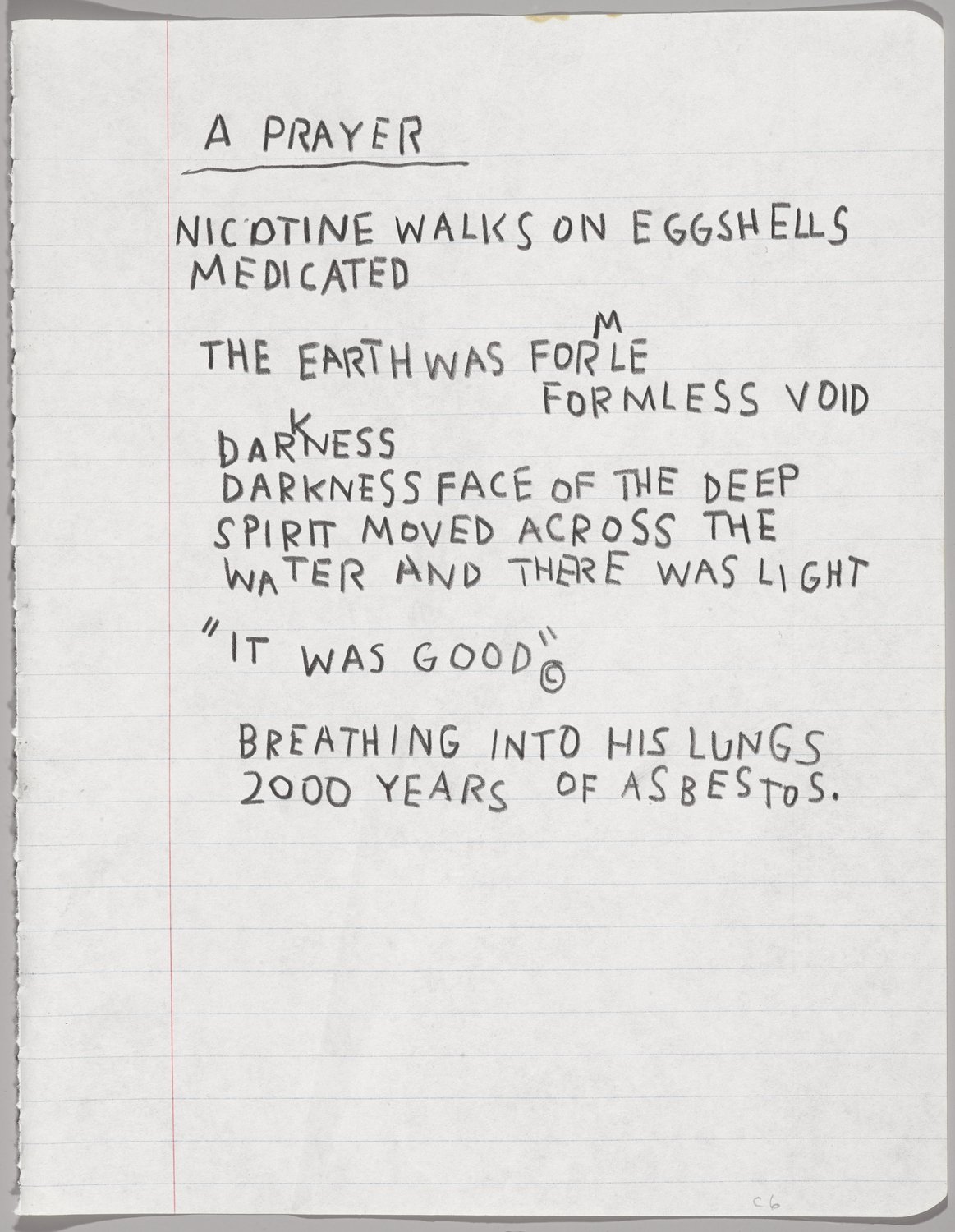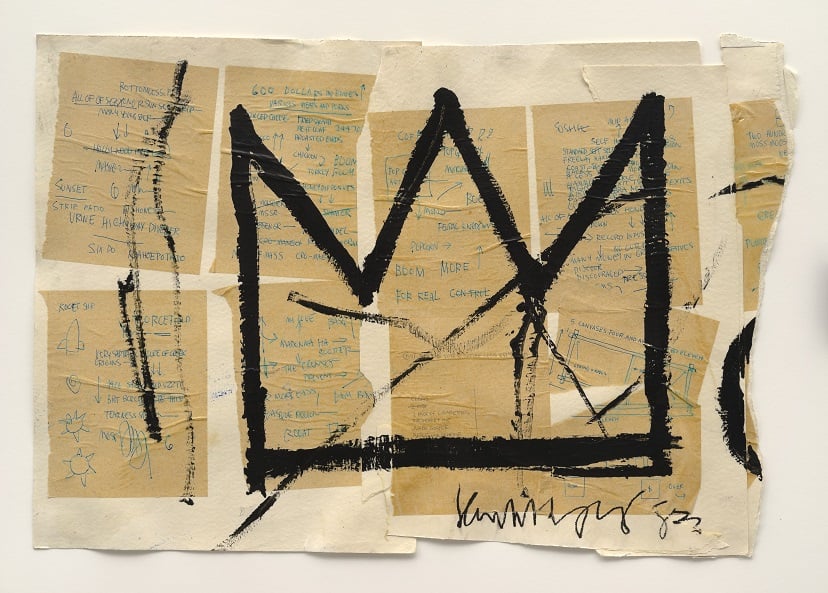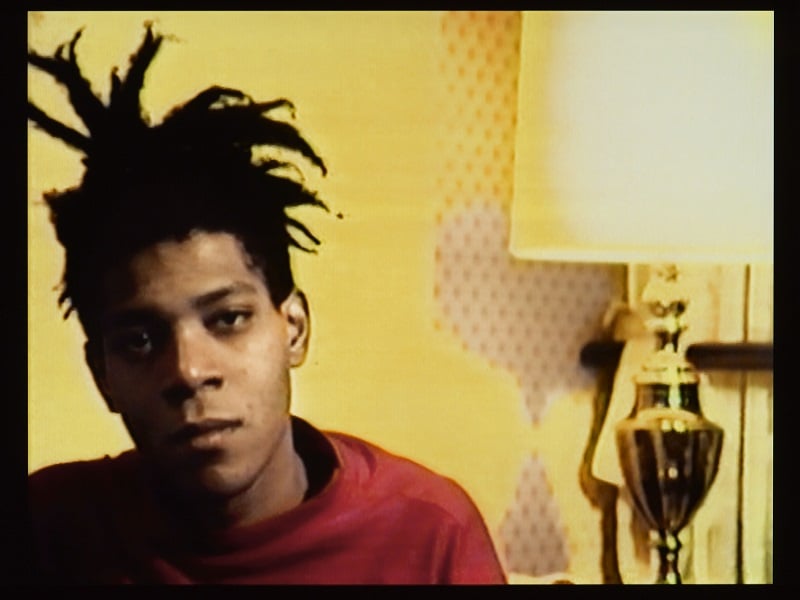Art & Exhibitions
Basquiat and His Journals Unbound at the Brooklyn Museum
Personal reflections from 'the mind of a master.'

Personal reflections from 'the mind of a master.'

Cait Munro

Jean-Michel Basquiat famously began his artistic career as a graffiti writer during his teenage years in New York, during which time he was also a junior member at the Brooklyn Museum. Now, 27 years after his death and ten years after the museum’s seminal retrospective of his work, we will get to experience firsthand his linguistically-inclined creative process, thanks to 160 pages from eight surviving journals that will be showcased as part of “Basquiat: The Unknown Notebooks,” which opens on April 3.
The notebooks, which belong to collector Larry Warsh, have never been exhibited previously. “If you’ve seen them before,” said associate curator of exhibitions Tricia Laughlin Bloom, “it’s because you either know the collector or knew the artist.” Seven of the eight notebooks have been unbound, which will allow visitors to view all of the pages, in sequential order.
If it sounds like poring over 160 pages of frenzied notes and doodles will be an involved, scholarly process fit for only his most devoted fans, rest assured that the show promises something for everyone. There will also be 32 paintings and two videos of Basquiat—a three-minute short that shows him doing graffiti in the early 1980s and a 23-minute interview.
But those who choose to trawl the pages in-depth will be rewarded. Basquiat’s writings contain recurring images, running themes, as well as notes and poetic fragments from his daily life—ephemera like grocery lists and takeout orders that maintain consequence only because of their connection to a bonafide genius.

Jean-Michel Basquiat, untitled notebook page (1980-81).
Photo: Courtesy of Larry Warsh/Estate of Jean-Michel Basquiat.
“Reading his notebooks, it’s not clear if he’s sometimes eavesdropping on a couple in the next booth at a diner on the Bowery or making it up as he goes along,” writes Henry Louis Gates, Jr. in the exhibition catalog introduction. “Then you realize it doesn’t matter. It’s all being funneled through the mind of a master manipulating the riotous chaos of stimuli around him to forge an expression with new form and meaning, one that could never have been created without his intervention.”
Each page of the journals has been reproduced in the exhibition catalog.
“It will be revealing for people to see what his process was, spanning the breadth of his professional career,” said Bloom. “It’s an incredibly unique opportunity…for people that spend the time, they’re going to enjoy looking for representations and imagery from the small- and large-scale works.”

Jean-Michel Basquiat, Untitled (Crown) (1982).
Photo: Courtesy of Lio Malca/Estate of Jean-Michel Basquiat.
A unique and revealing opportunity to be sure, but also a bit of a voyeuristic one. “Reading his notebook feels voyeuristic,” writes Gates, “until you realize that Basquiat was determined from a young age to be famous.”
And the show comes at a time when Basquiat has arguably never been more famous than he is right now. His 1982 painting Dustheads currently holds the record for one of his artworks sold at auction, and his name has become a mainstay in the collections of celebrities and art world cognoscenti.

Tamra Davis, still from A Conversation with Basquiat (2006).
Photo: Courtesy of the artist/Estate of Jean-Michel Basquiat.
“It’s been a long time coming,” said Bloom. “For us, it’s about wanting to do a follow-up to the 2005 show. But I think the lender was waiting for the right moment, especially in terms of things lining up with the estate, which has been very much a part of bringing the show together.”
From a kid with not much more than a spray can and a museum membership card to a figure so lionized we literally want to pore over his diaries, Basquiat’s second return to Brooklyn is nothing if not triumphant.